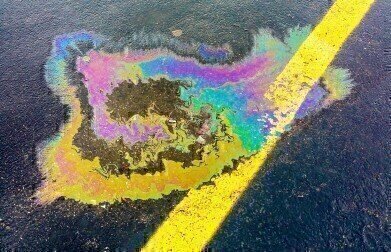Fuel for thought
What is a Petroleum Seep?
Apr 12 2015
Petroleum seeps are naturally occurring springs where oil leaks out of the ground. These seeps occur when cracks in the earth allow the oil to escape, and pool above the surface.
Where are petroleum seeps usually found?
Petroleum seeps are typically found where oil drilling and excavation activities are being carried out. This is thought to be due to the nature of excavation which disturbs the surrounding areas, and can cause fissures in the ground.
Seeps can also occur where the land has moved over time. In this scenario, the folds of sedimentary rock shift, which allows the oil to leak out to form a natural seep on the surface.
These seeps tend to occur in clusters around the world, and many can be found in the Gulf of Mexico and off the southern coast of California.
What is in a petroleum seep?
The oil that makes it to the surface to form a seep will eventually convert from a clear-like fluid into a tar-like substance called asphaltum. This is because the lighter elements of the oil evaporate, leaving the heavier oil compounds which then oxidise.
This oxidised substance is also attacked by bacteria and in its final stage becomes sticky and black.
Are petroleum seeps toxic or dangerous?
Whenever there is a news report on an oil spill, the concern is always focussed towards the environment and damaging effects on wildlife. So shouldn’t we be as worried about petroleum seeps?
The answer is no. This is because seeps are typically very old, and take a long time to emerge at the surface. The oil that finally emerges is not pure crude oil, as it has been already heavily biodegraded by bacteria, deep beneath the surface of the earth.
The substance that does come out is still toxic. However, because seeps have been around for a very long time, organisms and wildlife have managed to build up their defences. Most who live in the area of seeps have adapted well to these toxic compounds. Even more surprising is that some unique species of wildlife actually use the chemicals and hydrocarbons released in a seep for metabolic energy. For more information on this topic, read: Introduction to the Four Categories of Crude Oil Toxicity.
What can we learn from petroleum seeps?
In contrast to petroleum seeps, the extraction and transportation of crude oil typically produces high-volume quantities in a short period of time. It also takes place in areas that have not had a long exposure to these types of chemical compounds. This means that seeps are generally looked upon by scientists as a rare chance to study how natural processes affect oil, and how species adapt over time to toxic chemicals.
It is hoped that these studies may provide better techniques in the future for dealing with actual oil spills, and a greater understanding on how they affect wildlife and the environment.
Digital Edition
PIN 26.1 Feb/Mar 2025
March 2025
Analytical Instrumentation - Elemental Analysis for Quality and Process Control at Refineries, for Lubricants and Wear Metals in Engine Oils - Synthetic Lubricants: New Developments - Scaling...
View all digital editions
Events
Apr 08 2025 Birmingham, UK
Apr 08 2025 Kielce, Poland
Apr 08 2025 Ravenna, Italy
Apr 08 2025 Southampton, UK
Apr 08 2025 London, UK



















